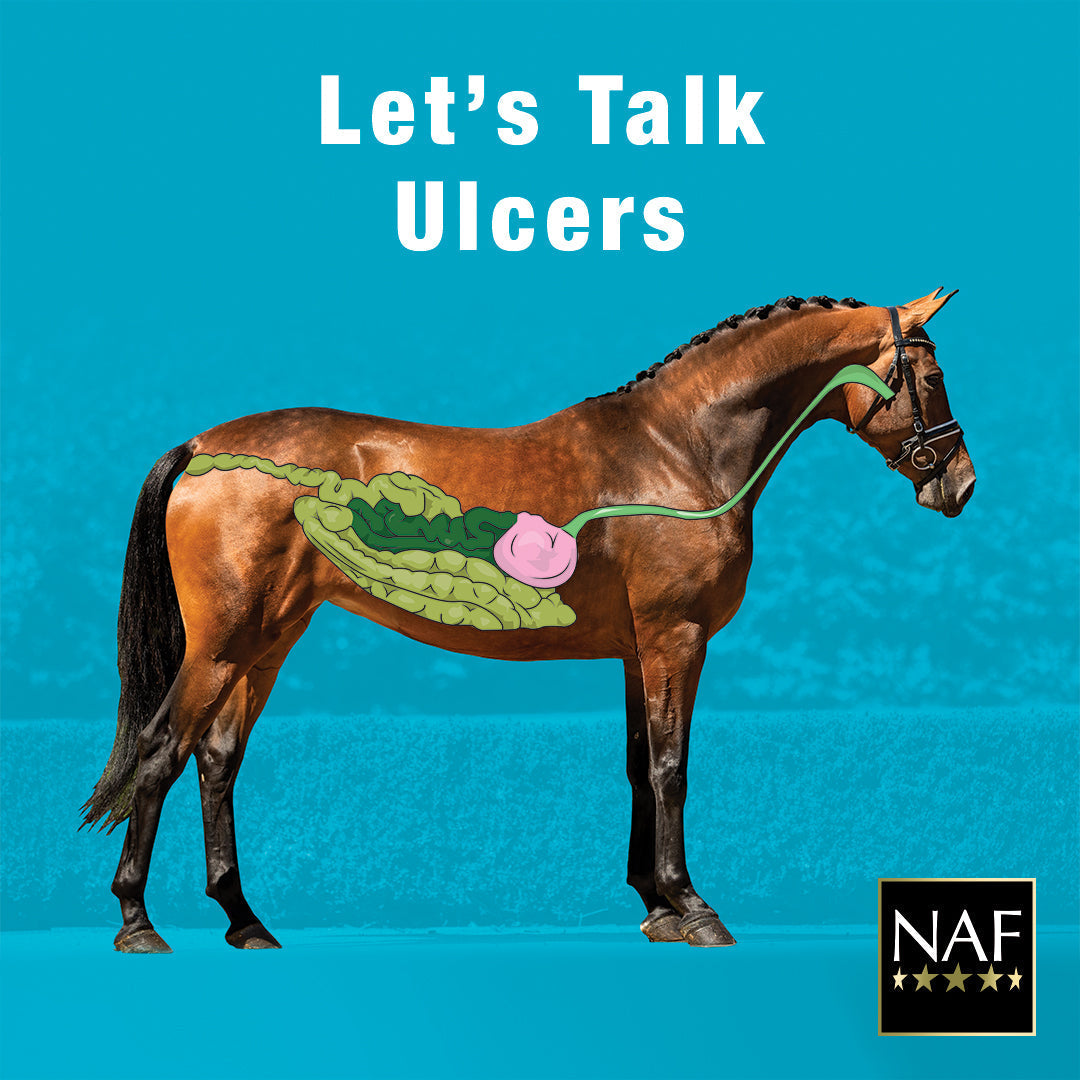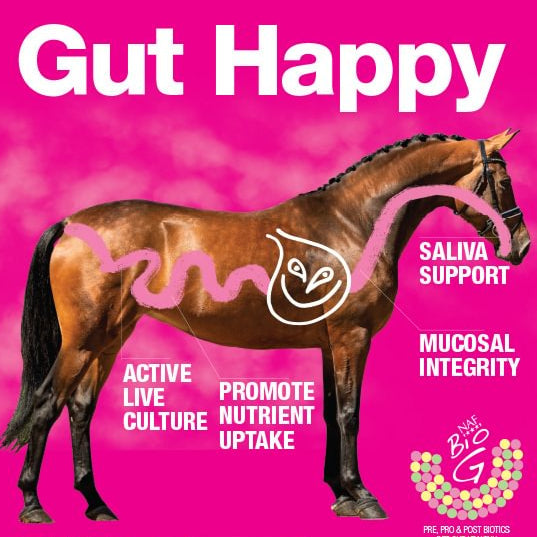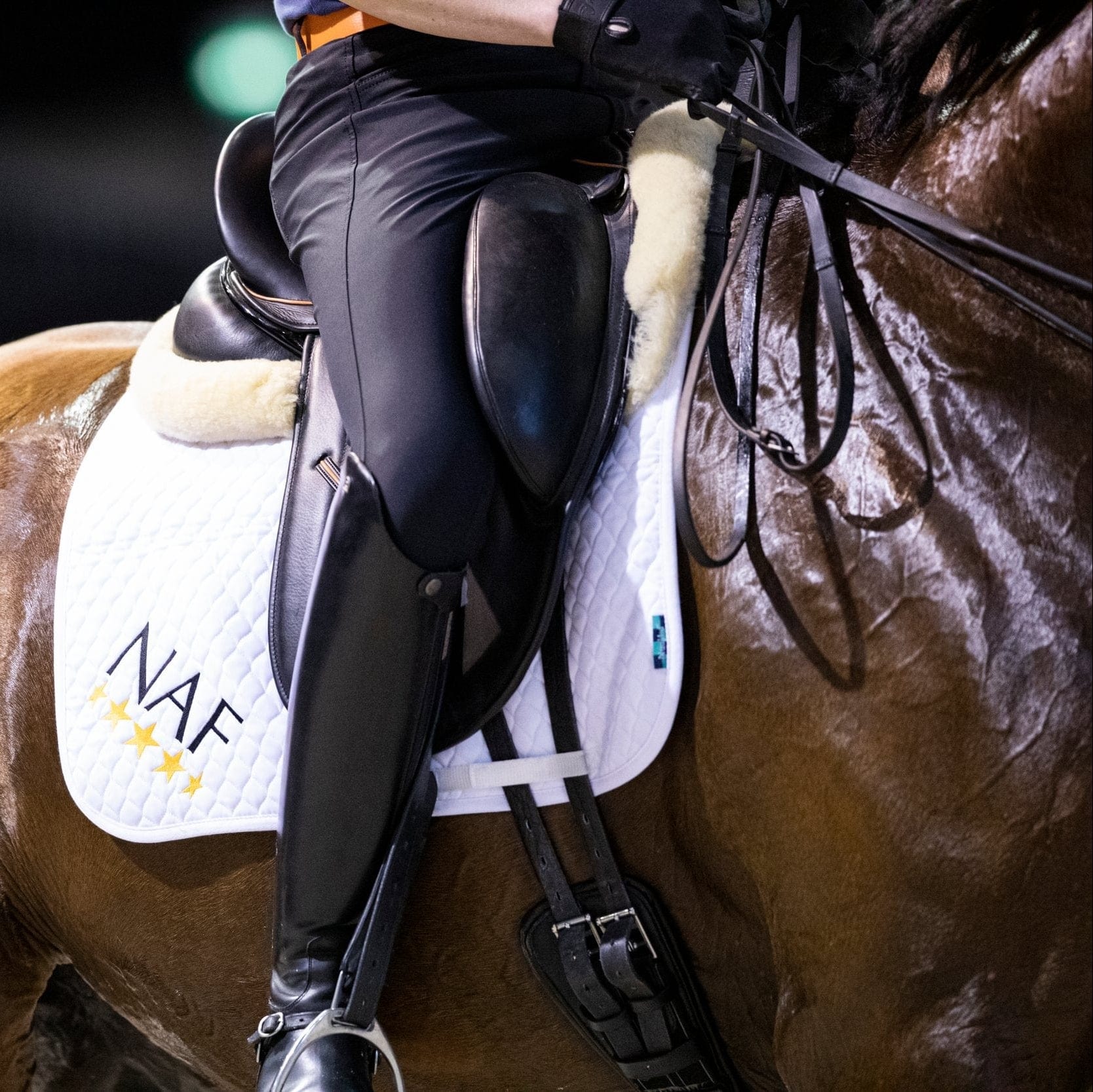What Are Gastric Ulcers in Horses?
Gastric ulcers are a common concern among horse owners, affecting horses of all disciplines and ages. Equine Gastric Ulcer Syndrome (EGUS) can significantly affect a horse’s health, performance and overall well-being. Understanding the causes, symptoms and management of gastric ulcers is crucial in ensuring your horse remains comfortable and in peak condition. In this blog, we will explore the key aspects of EGUS and provide practical feeding advice to help support gastric health.
Gastric ulcers occur when the stomach lining is damaged by excess gastric acid. Horses are naturally designed to graze for long periods. This trickle feeding of grass will lead to continual saliva being produced by the salivary glands in the mouth and throat. Trickle feeding will also stimulate continuous production of acid in the stomach. Acid is an important part of the digestive system and also the immune system so it is produced for a reason. The continual production of saliva help in a horse with continual access to grass or forage will help to buffer the acid and keep the stomach in a happy equilibrium. Modern management practices such as restricted turnout, high-starch diets and intensive training, can upset the natural equilibrium and increase the risk of ulcers developing. This risk can be reduced with appropriate management and feeding practice however.
What are the different types of Gastric Ulcers in Horses?
EGUS is typically classified into two main types:
- Equine Squamous Gastric Disease (ESGD): Ulcers in the upper (squamous) portion of the stomach, often caused by prolonged exposure to stomach acid. The squamous region of the stomach has less inherent resistance to the effects of ‘acid splash’.
- Equine Glandular Gastric Disease (EGGD): Ulcers in the lower (glandular) portion of the stomach that is inherently more resistant to acid. Appearance of ulcers in this area is less well understood but often linked to stress and impaired protective mucus production.
What are the key Signs and Symptoms of Gastric Ulcers in Horses?
Recognizing the clinical signs of gastric ulcers can help ensure early intervention. Common signs include:
- Poor appetite or reluctance to eat
- Weight loss or difficulty maintaining condition
- Dull coat and poor overall appearance
- Behavioural changes such as irritability, girthiness, or reluctance to work
- Mild colic symptoms or discomfort after eating
- Reduced performance and reluctance to go forward under saddle
- Stereotypical behaviours such as wind-sucking and crib-biting, which may be linked to gastric ulceration
If you suspect your horse has gastric ulcers, a veterinary diagnosis via gastroscopy is essential for accurate treatment and management. If confirmed, your vet is likely to prescribe a course of potent acid-suppression drugs from a class known as proton-pump inhibitors. These act to inhibit gastric acid production thus allowing ulcers to heal, so they are an important aspect of most treatment protocols. It is also important that appropriate management and feeding changes are incorporated alongside medication, in order to promote long-term gastric health and reduce the reliance on medication.
Practical Feeding Advice for Gastric Health
Diet plays a crucial role in preventing and managing gastric ulcers. Here are some key feeding strategies to help support your horse’s stomach health:
1. Increase Forage Intake
Horses are designed to graze continuously, producing saliva that buffers stomach acid. Providing ad-lib forage (hay or haylage) ensures a constant protective source of saliva in the stomach. If turnout is limited, offering frequent small meals of hay throughout the day can help.
2. Reduce High-Starch Feeds
Cereal-based feeds can increase stomach acid production and exacerbate ulcer risk. Opt for high-fibre, low-starch feeds such as soaked beet pulp, alfalfa, or specialist ulcer-friendly feeds.
3. Feed pre-exercise to reduce acid splash
A small fibre based feed, such as chaff, can be beneficial if fed to horses 30-60 minutes before they exercise. The fibre can help form a mat on top of the gastric juices to minimise acid splashing up onto the unprotected squamous mucosa when horses exercised. The saliva that is produced during consumption will also act as a natural buffer, again helping to reduce the potential for acid to cause splashing and ulceration.
4. Avoid Long Periods Without Food
Horses left for long periods without food are at higher risk of ulcers due to continuous acid production not being buffered with saliva. Fibre intake will also support a healthy microbiome with associated benefits throughout the gastrointestinal tract. If feeding times are spread out and grazing access is not available, the use of slow-feed hay nets can prolong feeding time and support gastric health.
5. Provide Access to Fresh Water
Dehydration can exacerbate gastric irritation. Ensure your horse has access to clean, fresh water at all times, particularly when travelling or competing.
The Role of Supplements in Supporting Gastric Health
Nutritional supplements can play a valuable role in maintaining a healthy stomach environment and managing ulcers. Here are some key ingredients to look for in an equine gastric health supplement:
- Prebiotics, Probiotics and Postbiotics: Help support a balanced gut microbiome, promoting digestive efficiency and overall health.
- Calcium and Magnesium: Act as natural acid buffers, reducing gastric acidity.
- Marshmallow and Licorice root: Known for their soothing properties, these ingredients help support the stomach lining.
- Pectin-Lecithin Complex: Forms a protective gel that shields the stomach lining from acid.
- L-glutamine: An amino acid that plays a crucial role in gut health, supporting the repair of the stomach lining and reducing inflammation.
When choosing a supplement, ensure it is scientifically formulated, palatable and easy to incorporate into your horse’s diet.
Management Tips to Reduce Gastric Ulcer Risk
Alongside diet and supplementation, management changes can help reduce stress and the likelihood of ulcers:
- Maximise turnout to allow natural grazing and movement.
- Reduce stress by maintaining a consistent routine, companionship and minimising changes.
- Use slow-feed hay nets to extend feeding time.
- Provide forage before exercise to help buffer stomach acid.
- Avoid prolonged fasting, particularly when travelling or competing.
Conclusion
Gastric ulcers are a significant concern for horse owners, but with the right feeding, management and supplement support, you can help protect your horse’s gastric health. If you suspect ulcers, consult your vet for diagnosis and treatment. By optimising forage intake, reducing starch and incorporating targeted supplements, you can create a supportive diet that promotes digestive well-being and enhances performance.
Written by: Dr Andy Richardson, Veterinary Director - - BVSc CertAVP(ESM) MRCVS. – Find out more about Andy and our Technical Team HERE.



